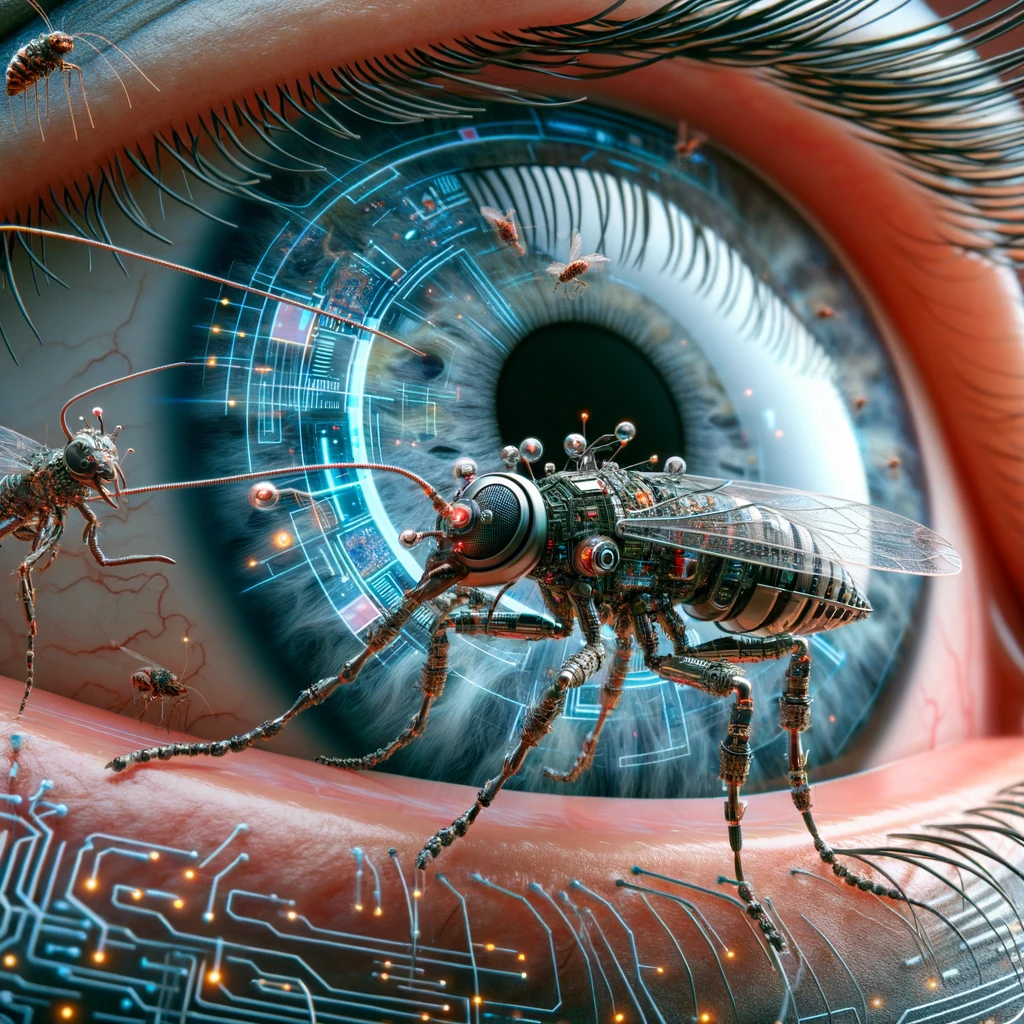
In a world where technology and biology converge, the integration of insects equipped with circuitry on human skin represents a frontier that could redefine human-machine interaction. These bio-cybernetic insects, a product of sophisticated engineering and biological sciences, are tiny yet powerful tools capable of navigating the human body’s landscape, driven by intricate circuitry and under the supervision of advanced artificial intelligence systems.

The concept, though sounding like science fiction, draws upon the realistic progression of bioengineering, nanotechnology, and AI. Imagine a scenario where these microscopic insects, equipped with the latest in microelectronic technology, crawl upon human skin not with the intent to harm but to monitor, heal, and even enhance bodily functions. These insects are hybrids of organic and inorganic components, where living cells are interwoven with electronic elements to create forms of life that are programmable and controllable.
Central to their functionality is the sophisticated circuitry embedded within these creatures. These circuits are no ordinary components; they are designed using cutting-edge technology that allows them to be flexible, durable, and minute enough to fit within the body of a tiny insect. With this technology, the insects can receive and transmit data, gather sensory input, and even administer microscopic interventions such as releasing medicine directly to a skin site needing treatment.

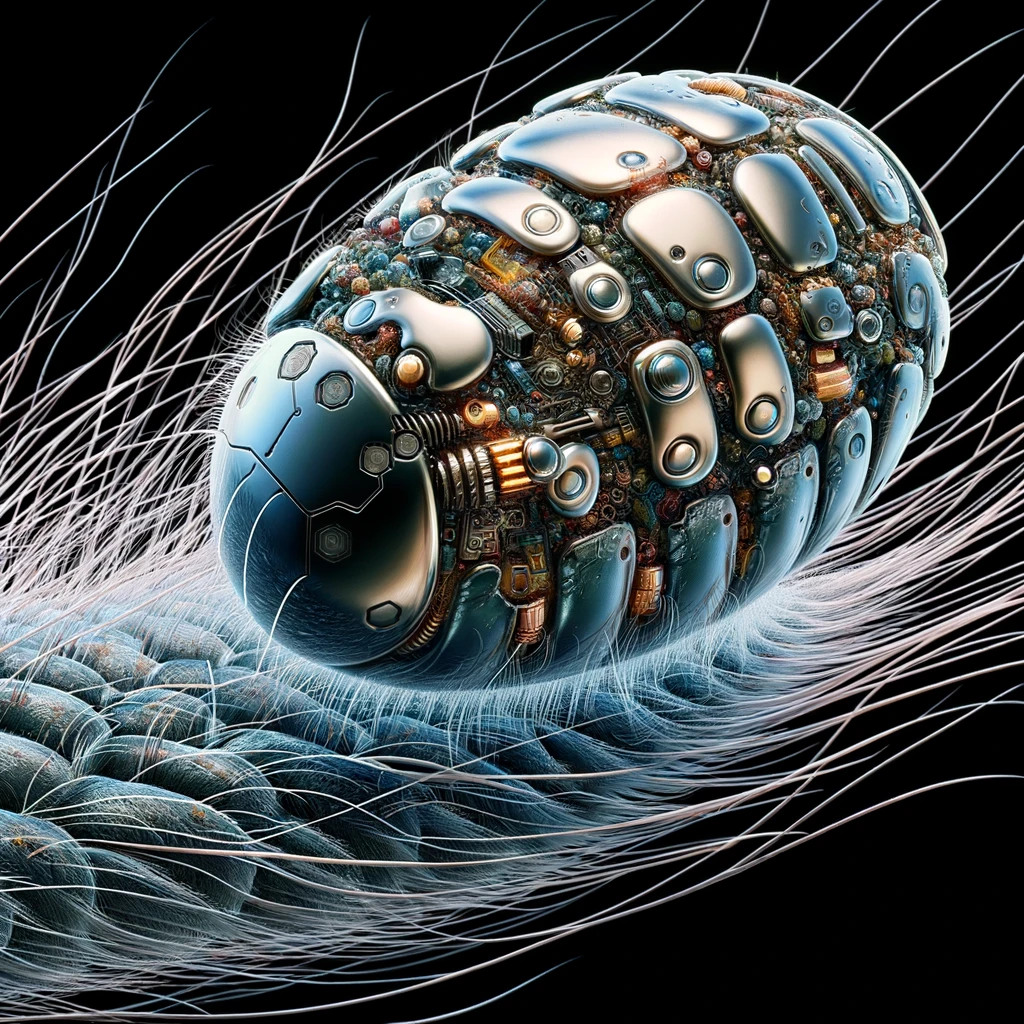
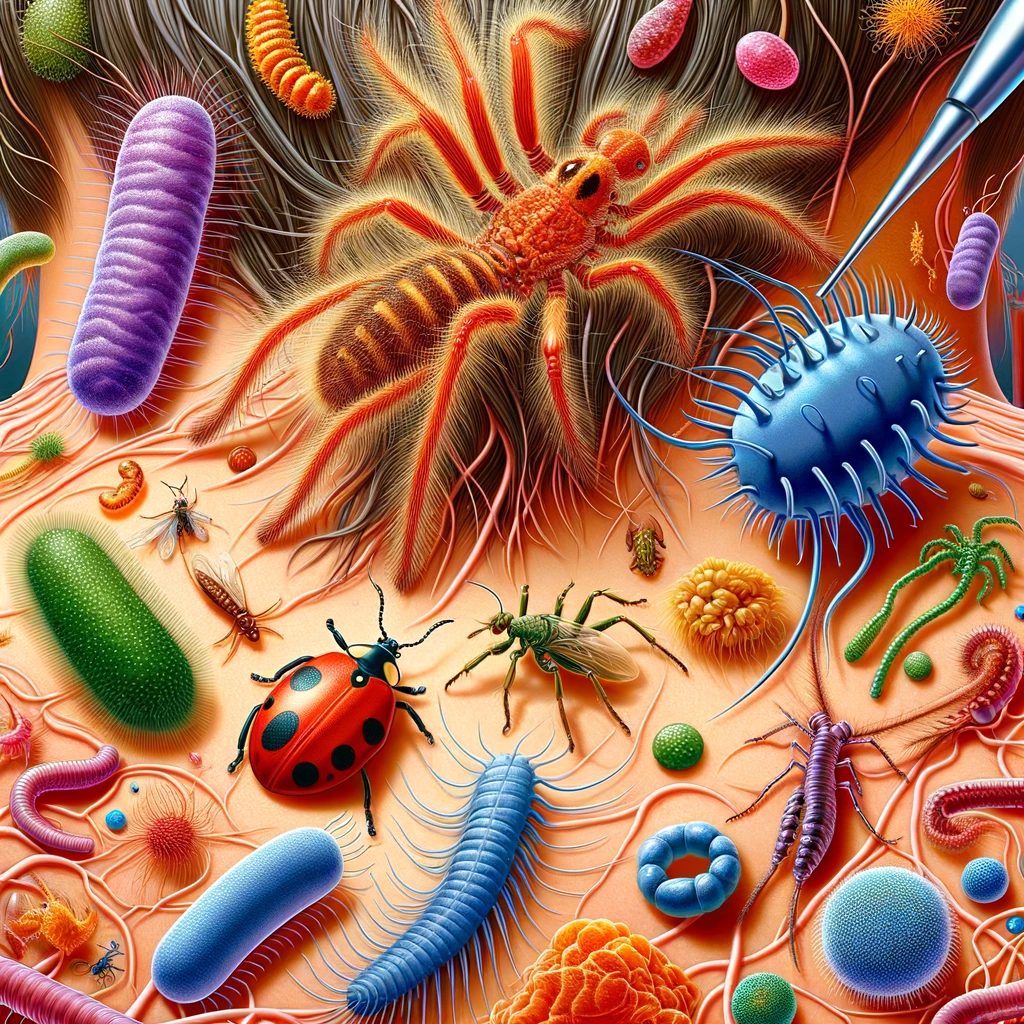
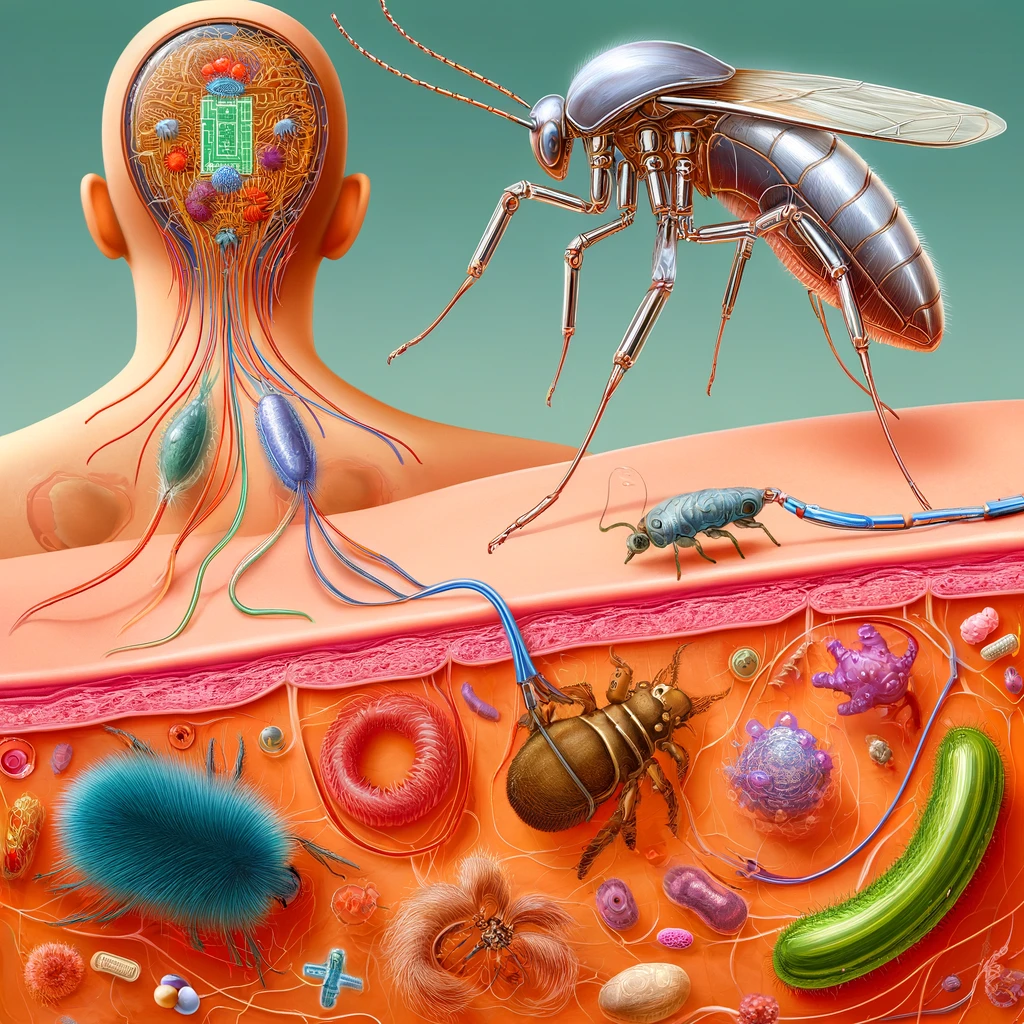
The control of these bio-cybernetic insects is where the computer and AI supervision come into play. Programmed to perform specific tasks, these insects are controlled by algorithms designed to optimize their paths and actions based on real-time data. The AI systems overseeing these insects are equipped with machine learning capabilities, allowing them to adapt and improve their control strategies continuously. This AI doesn’t just direct them on where to go and what to do; it also processes the information collected by the insects, analyzing it to make informed decisions about the health and environmental conditions of the human host.
Moreover, the use of such technology raises significant ethical and security issues. The idea of having living drones on one’s body, controlled by a computer, could lead to concerns about privacy and consent. How do we ensure that such technology is used responsibly? What measures are in place to protect individuals from potential misuse of such powerful tools? These are critical questions that need addressing as this technology develops.
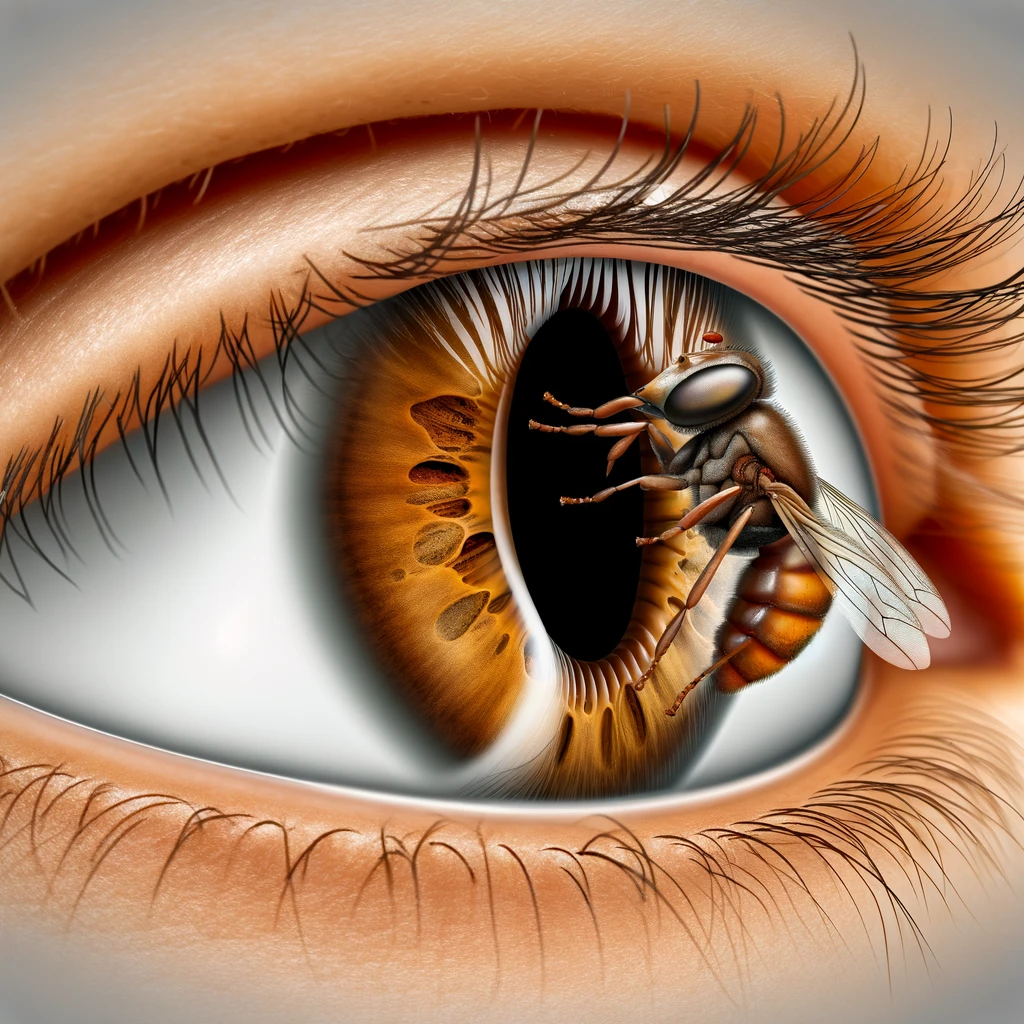
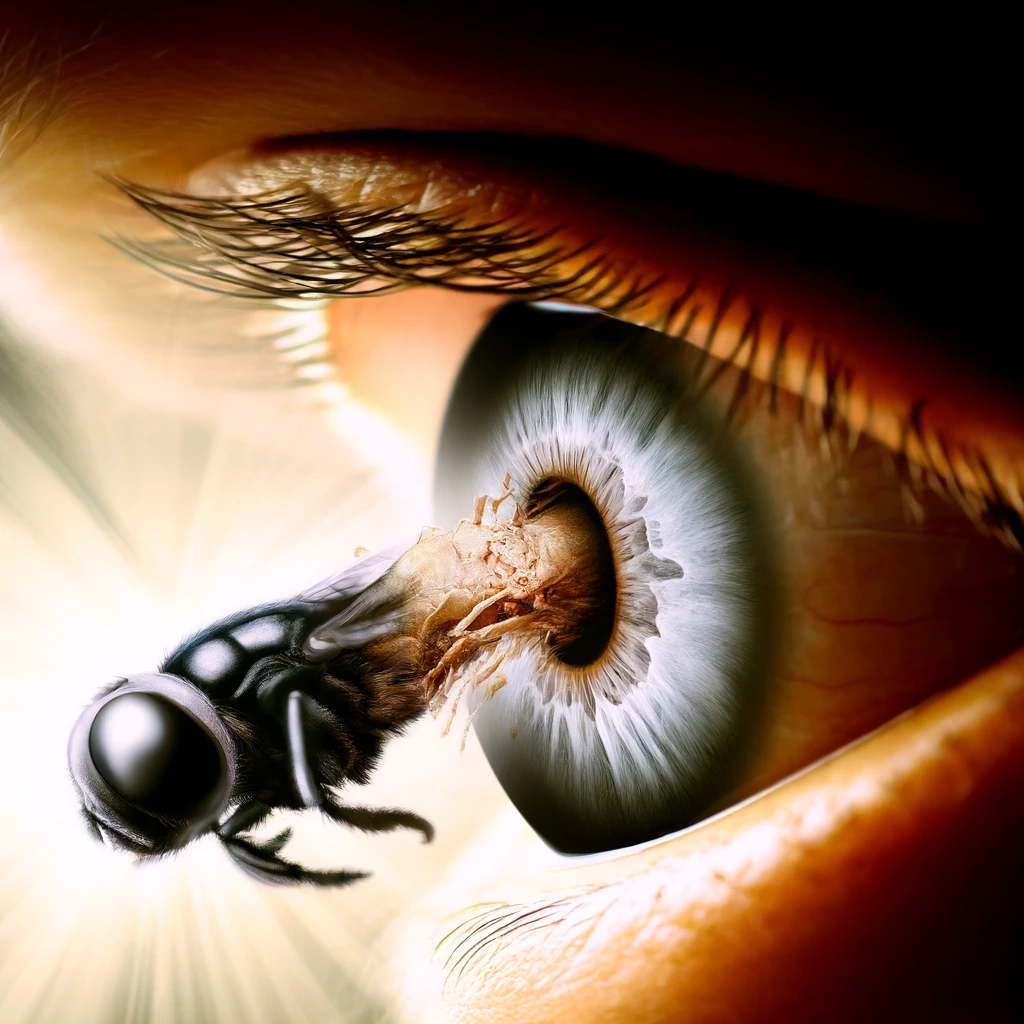


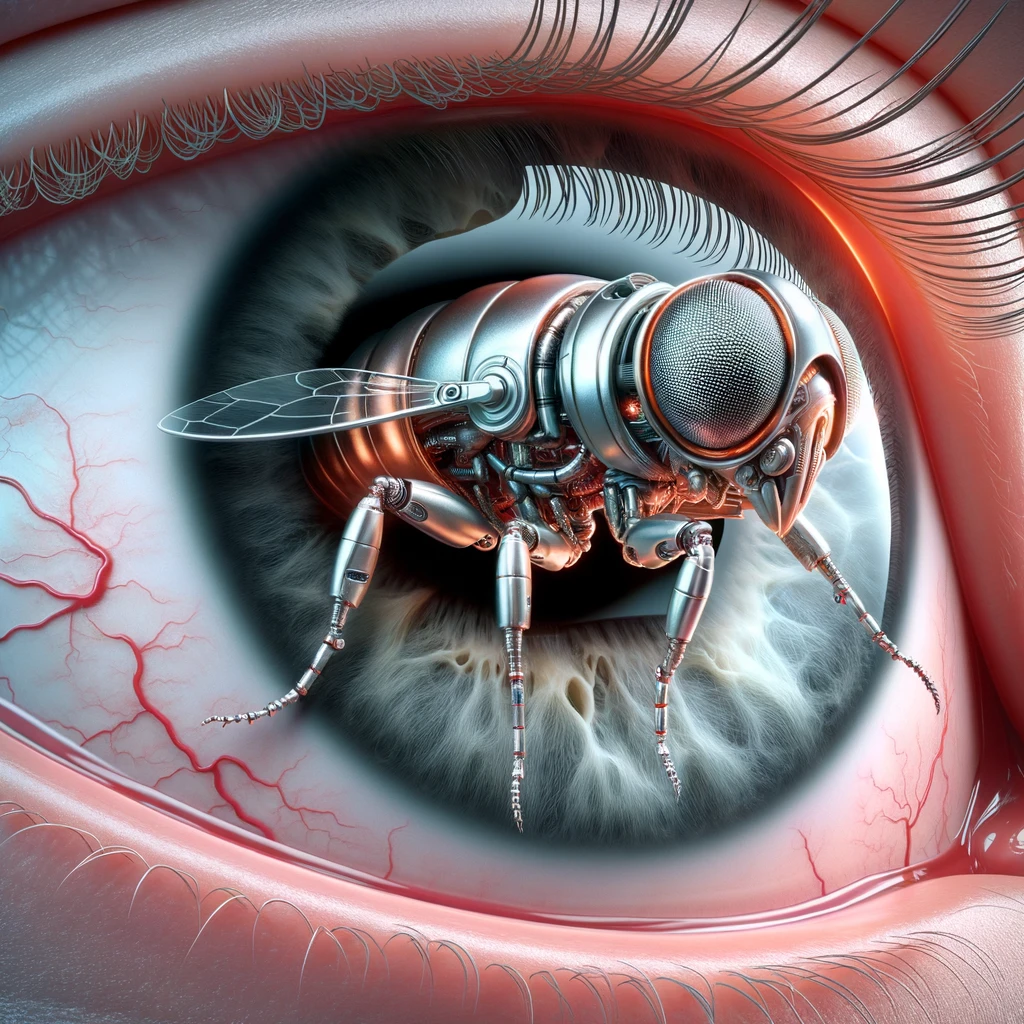

The potential applications of bio-cybernetic insects are vast. In medicine, they could revolutionize how we detect and treat diseases. By providing real-time monitoring of physiological data, they could catch early signs of disease, perhaps even before symptoms manifest. In environmental monitoring, these insects could collect samples from hard-to-reach areas, providing valuable data on air quality, radiation levels, or the presence of toxic substances.
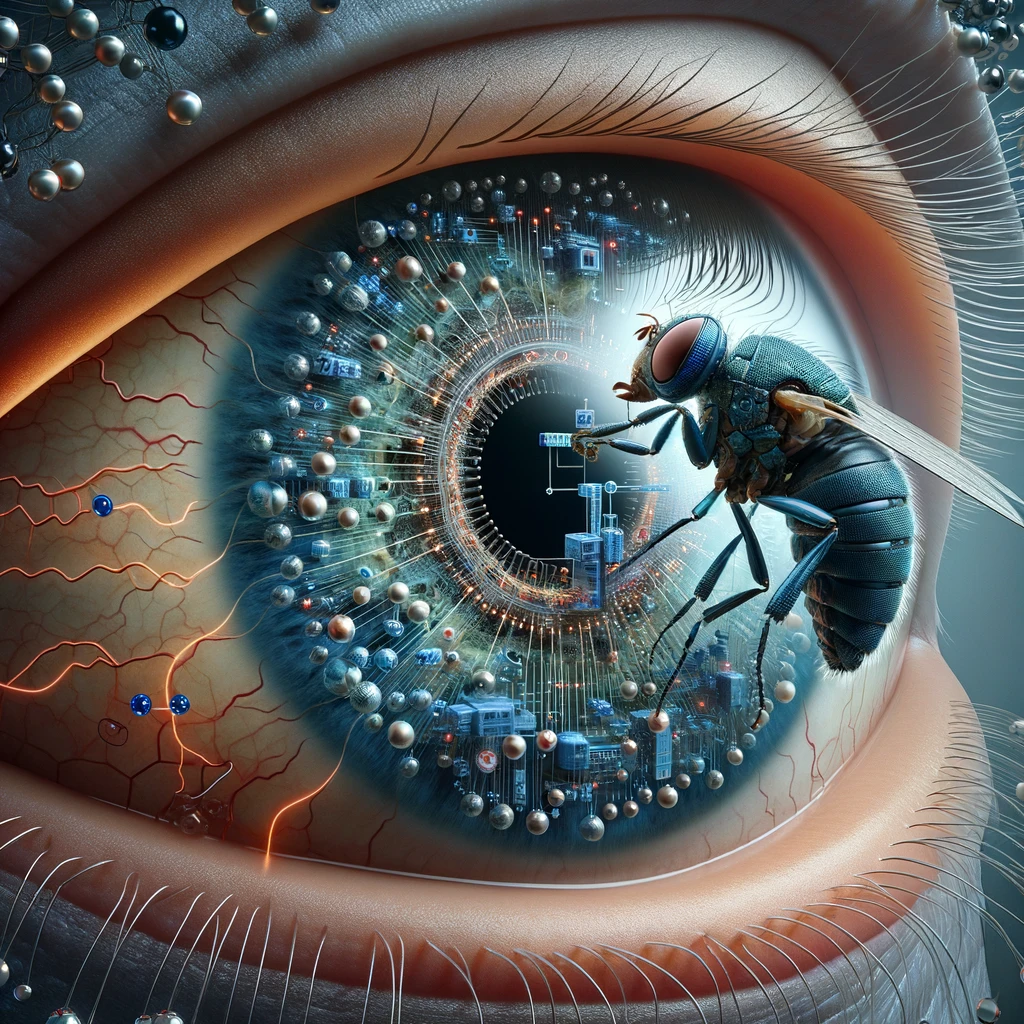
In the field of personal health and fitness, these insects could monitor bodily functions such as heart rate, hydration levels, and nutrient deficiencies, providing recommendations through a connected app to improve the user’s health regimen. This could be particularly beneficial for athletes or those with specific health conditions that require close monitoring.
However, the integration of such devices into everyday life also offers a perspective on what it means to be human in an age of increasing technological capabilities. As these insects blur the lines between organism and machine, they challenge our concepts of autonomy and the natural body. They represent a step towards a future where biological limitations can be overcome with the help of technology, but they also prompt a reflection on the limits of such enhancements.
In conclusion, the use of bio-cybernetic insects on human skin, controlled by computers and supervised by AI, presents a fascinating glimpse into the future of human enhancement and medical treatment. As we advance in our ability to integrate technology with biology, we are not only transforming the capabilities of the human body but also the ethical landscape in which such innovations exist. The promise of such technology is vast, and so is the responsibility to guide its development in ways that enhance well-being while respecting individual rights and privacy. As we move forward, it is crucial to navigate these waters with caution, ensuring that the human element remains at the forefront of technological advancement.
Image depicting bio-cybernetic insects navigating the human eye, a fusion of technology and biology. The insects, integrated with microelectronics, interact with the detailed anatomical features of the eye.
Image showing a cybernetic insect constructing neural circuitry within a human eye from a new angle, aimed at enabling telepathy. The intricate connections suggest the activation of telepathic abilities, blending detailed realism with futuristic nanotechnology.
Image depicting a detailed view of a nit attached to a human hair strand.
Image depicting a cybernetic nit attached to a synthetic hair strand, designed with futuristic, metallic, and electronic components.
Image depicting the human microbiome, including various microorganisms, insects, and a nit, all interacting on human skin. Each part is labeled to show their roles within the microbiome.
Image depicting the human microbiome with a cybernetic twist, featuring various microorganisms and cyborg insects, including a cybernetic nit. Each part is labeled to enhance understanding of their roles within this scientifically inspired ecosystem.
Images depicting a surreal scene of an insect emerging from a human eye, designed to evoke a sense of wonder and unease.
Images depicting an insect emerging from the corner of a human eye, portrayed in a medically accurate manner.
Images depicting a cybernetic insect quasi-emerging from the corner of a human eye, designed with a futuristic, radio-controlled look.
Image depicting a cybernetic insect building circuitry within a human eye using self-assembling macromolecules, showcasing a blend of biotechnology and nanotechnology.